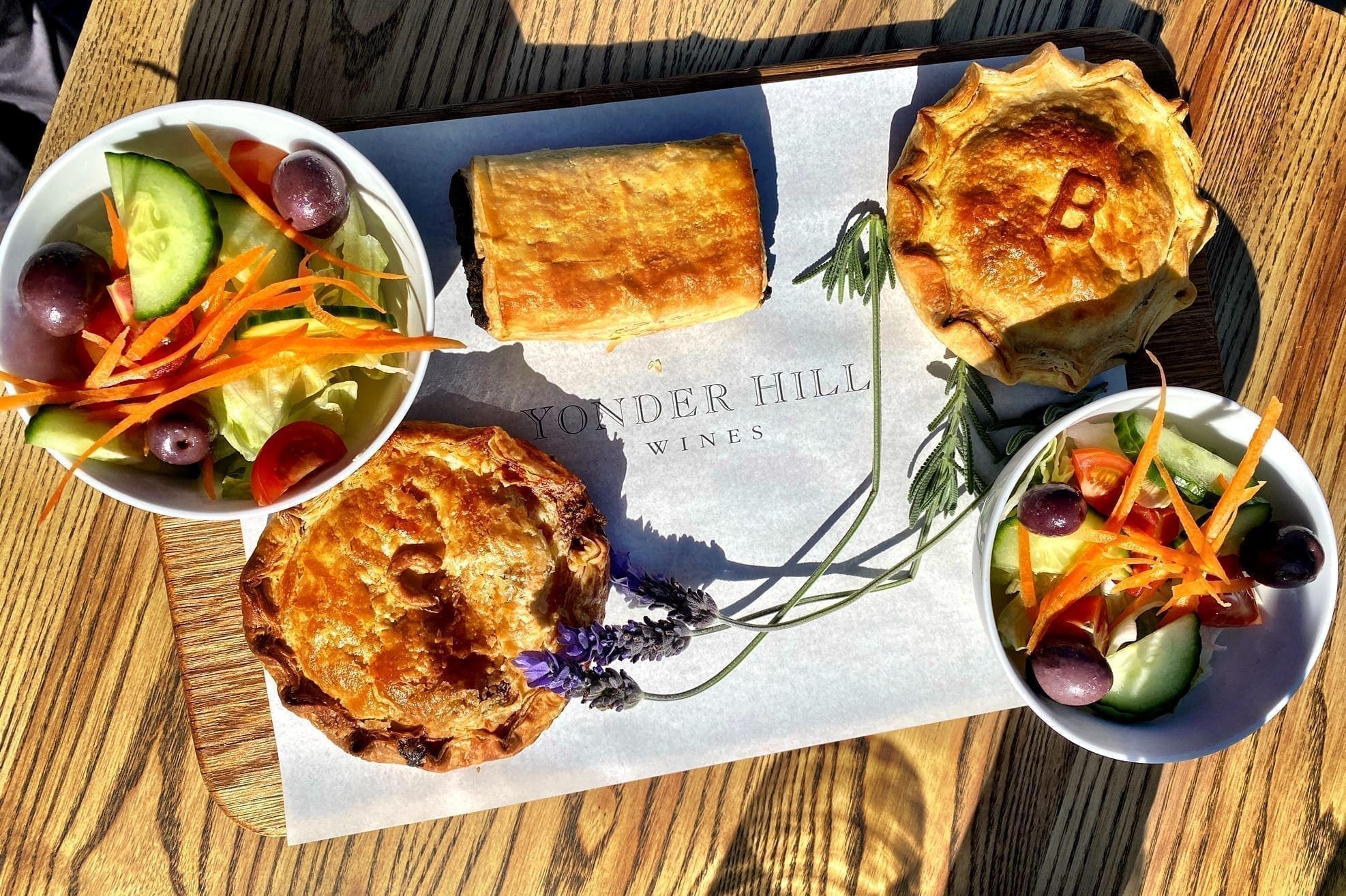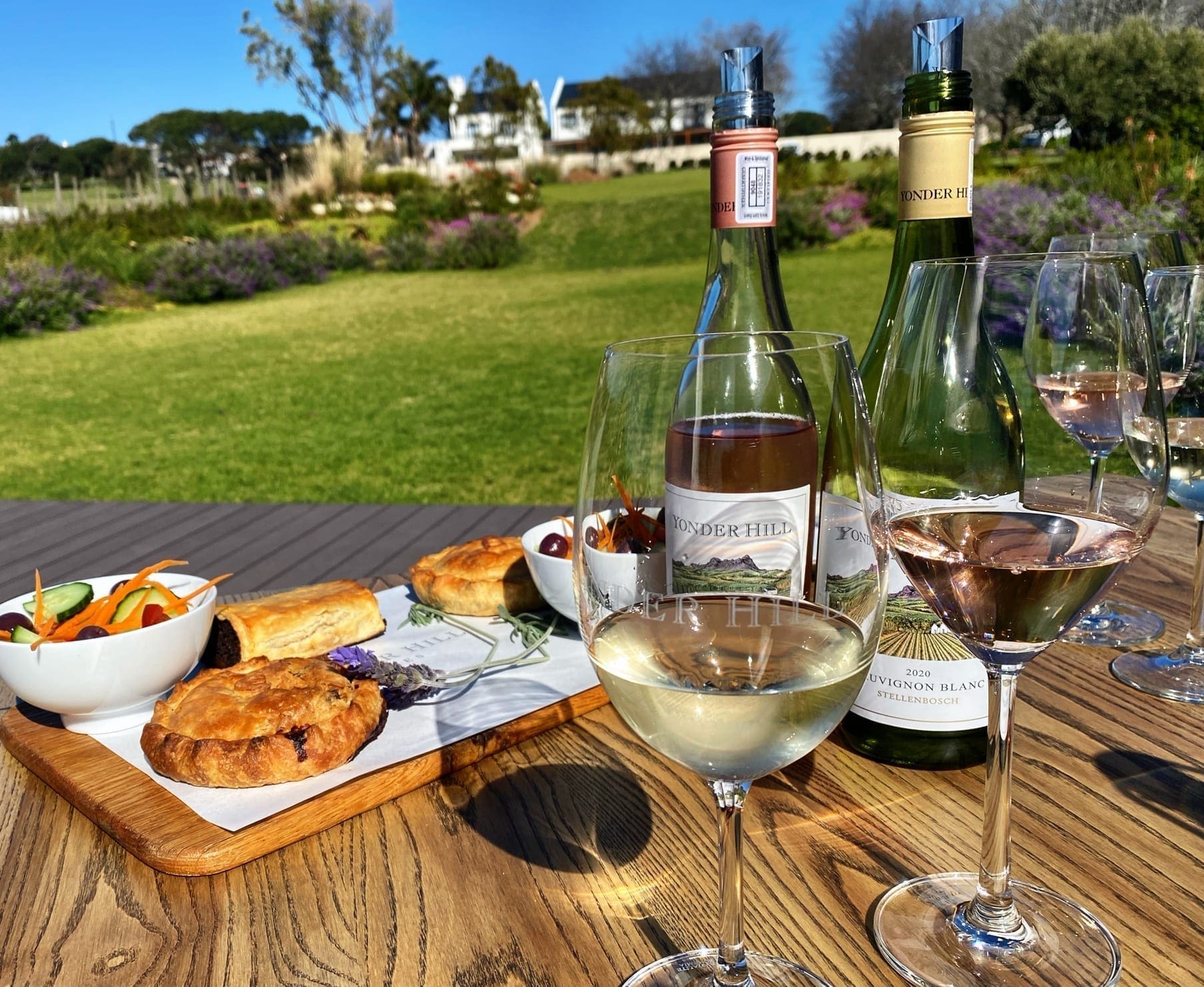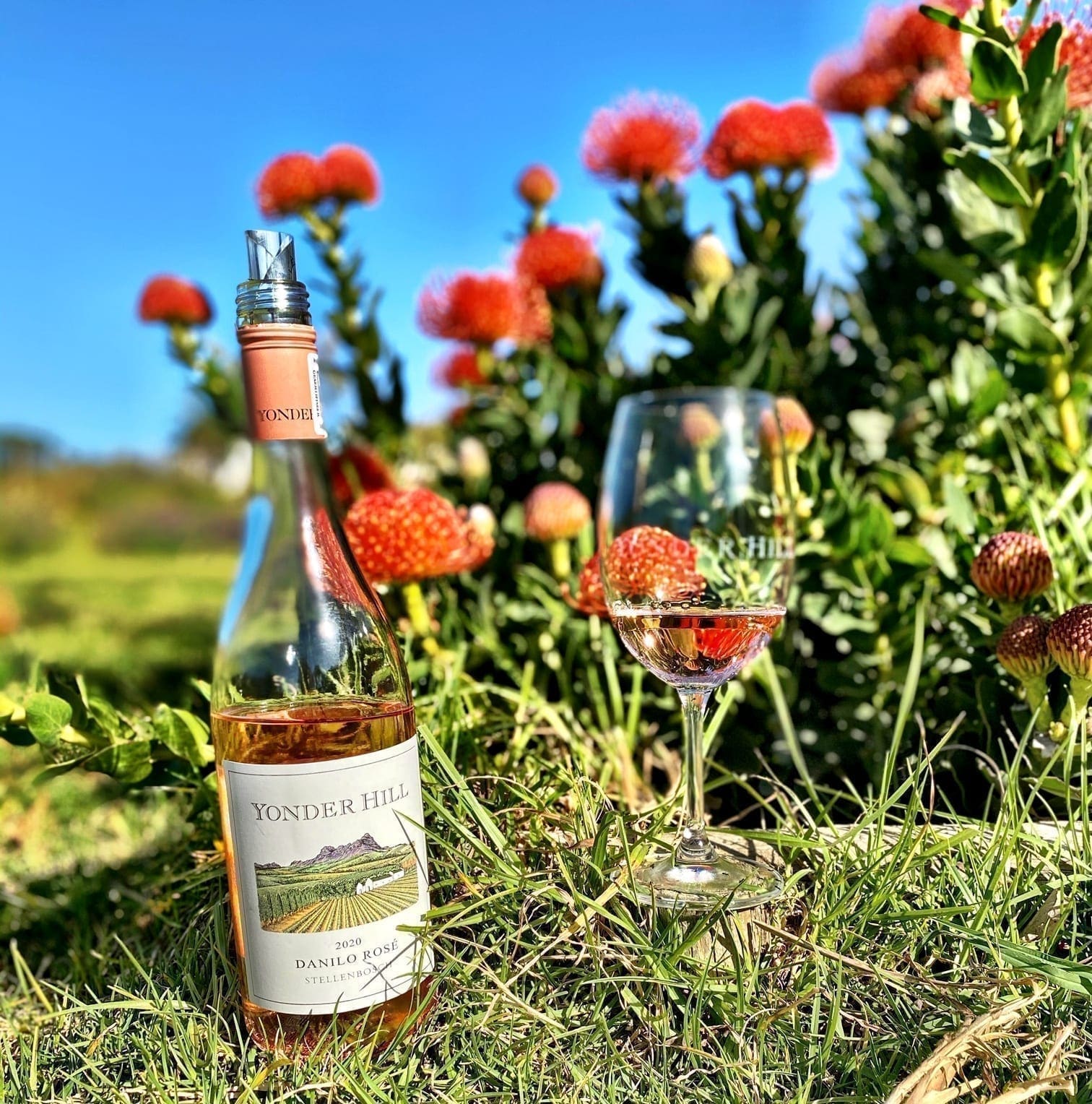SITTING outside in the spring sunshine, tasting wine and chatting to a winemaker is a most agreeable pastime. The place was Yonder Hill in Stellenbosch and the winemaker was Oom Abe Beukes.
I got to taste some new 2020 releases, two pies and a sausage roll, and our conversation ranged from Sauvignon Blanc styles to how long we should be keeping our wine to enjoy it at its best.
The pies are not a pairing with the wine as such, but if you want to drink a white wine, there’s a chicken pie that will go well with it – it being the 2020 Sauvignon Blanc. And with the Danilo Rosé too. The sausage roll will be good with a red wine, and if you fancy an Ankole craft ale the bobotie pie will do just fine. I loved Yonder Hill’s 2015 Inanda blend (sadly no more available) but Oom Abe said the 2016, being more Merlot-driven, is a fabulous food wine, and goes well with meaty mushroomy dishes so there’s that to look forward to. There is no ’17.

“Nicola is more Cabernet Sauvignon-based,” explains Oom Abe. “I tend to change the blend per vintage. It’s not a recipe wine; I work according to quality. The 2020 Cab Franc and Merlot was way better than the Cabernet Sauvignon so I brought it down from the usual 60-65% to about 40%.
“I was quite amazed when I picked the grapes I could already see the Cab Franc and the Merlot were just perfect – the balance was there, the colour, the depth, concentration…everything.”
The pies are a good size and with a side salad – for just R38 – it’s a full meal. You can order a bottle of wine, from R75 for the Sauvignon Blanc up to R345 for the flagship Nicola red blend, or do a tasting of one, two, or all the wines for R20 – R60 a person. The farm also produces the aforementioned beer, named for the cattle which live there, with their impressive sweeping horns. Very photogenic they are, and they are often grazing near the fence as you drive in so quite happy to pose for some pics. Fun fact: when he was deputy president, Cyril Ramaphosa farmed these animals. Whether he still does or not is for you to Google if you’re interested.

The fifth wine in Yonder Hill’s portfolio is the Ella Merlot; the 2016 vintage was due to be released yesterday.
The Sauvignon Blanc was bottle about two months ago. It’s made with grapes from Asara, and Oom Abe has a hand in the blending from different tanks. The other wines are all made on the farm, with a bit of Grenache bought in to blend with the Merlot for the Danilo.
Whether you should drink your Sauvignon Blanc now or let it languish for a year or three, depends on the style in which it’s made, says Oom Abe. “If you do get the typical cold style, the green and grassy one, they can mature for several years. We had a 2008 from Darling the other day and it was still in brilliant condition.”
The Yonder Hill SB is made from the beginning with the intention of being an easy drinking wine, with lower acidity. “This one has yellow fruit, and is almost more like a Chenin Blanc for me,” says Oom Abe.

While it’s become a race to see who can get their Sauvignon Blanc on the shelves first, earlier and earlier every year, this one is just right, right now, Oom Abe continues. “It’s the beginning of summer and it’s a summer wine, so for me it works perfectly well. If it was cooler I would have said keep it a bit later, till November or so. The fruit style also makes it easier to combine with food.”
I’m a big fan of the Danilo Rosé, having fallen in love with the 2019 vintage. When I went back in March to buy more, it was sold out. “Come back in September,” they said. Well, there I was and happily the 2020 is just as good as the ’19, if not better.
“It’s light, with a very nice mouthfeel,” says Oom Abe. “For me, it’s more on the berry side and not too flowery, and can be enjoyed with food. The ‘17 and ‘18 were for me personally were very good – and drink beautifully now – but for the market this is the better one. It’s more balanced, more rounded. A Rosé should be easy drinking.”
As the shadows lengthened our talk meandered towards vintages. It’s a popular opinion that 2015 and 2017 were good ones. “A lot of winemakers shoot down 2016 but I’m very happy with my ‘16s,” says Oom Abe. “It’s not a bad vintage. There’s nothing wrong. Maybe not as concentrated or elegant as the ‘15 but they’ve got another feature and that’s more acidity and life. And they’re not as dense.”
But don’t keep them for 10 years, rather drink at five to seven years, he advises. “I think the ‘17 is very close to the ‘15. Drink the ‘16s now, they’re perfect and won’t get much better with maturation, whereas the ‘15s and ‘17s will.”

Which brought us to the question of how long to keep wine, in general.
“Nowadays most of the wines are made to be enjoyed young, even those that typically been ‘ageable’. People don’t want to keep wines; they don’t have the space,” says Oom Abe. It therefore makes sense that winemakers have adapted to this.
But how do we, the average wine drinker, know? We don’t have access to the winemakers’ creative process or what he or she had in mind. Look at the price, says Oom Abe.
“Normally if it’s R300+ then the intention was to keep it longer. It’s a good clue. Cabernets and Bordeaux blends can go longer but if it’s under R100 don’t expect it to keep more than three years.”
So there you have it: the price rule beats the cultivar rule. There’s also nothing wrong with drinking it as soon as you get home from the bottle store/supermarket/wine farm. No judgement here.
For more information, click here. For more information about Support Stellenbosch, click here and here.
PHOTO CREDIT: BIANCA COLEMAN ©
